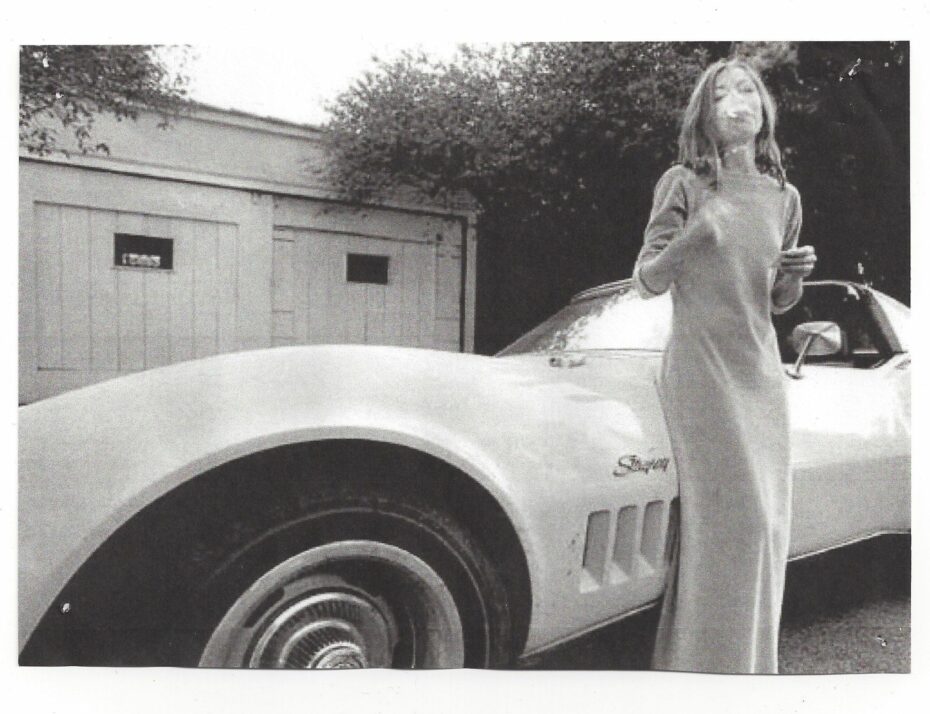
Is it just us, or has Joan Didion become the go-to heroine for millennial and even Gen Z “cool girls”? Move over Jane Birkin – by declaring allegiance to the late American writer on social media, Didion brings instant credibility and style to one’s online persona – even if one has never read The White Album. So her name is being thrown around a lot lately, but how much do folks really know about Didion? And then there’s Generation Alpha – will they even know about her at all? That had us worried. Knowing our audience however (it’s been more than a decade now), a Joan Didion appreciation piece would be too obvious; preaching to the choir, but we thought it might worth it to leave a snackable, even TikTok friendly, list of curious and intriguing Didion facts here. Ya know, for sharing with future generations, or anyone who’s been wanting to familiarise themselves with Joan for years, and just never got around to it. Oh, and the LA Times does have a great Joan Didion reading list to pass on to newcomers and fans alike.
1. Didion introduced herself to the reader’s of Life magazine by speculating on her own divorce

In 1969 Didion was a brand new writer for Life magazine. She and her husband John Dunne were in Hawaii, and she was charged with writing an article for the magazine introducing herself as a writer to their eleven-million-or-so readers. However, as Didion describes it in an interview with Blackbook, the My Lai massacre had happened the year before and she wanted to go to Vietnam to cover the ongoing conflict there. When Life denied her this because they were sending “some guys” out instead, Didion was angry. So she wrote her introductory column, but in a way that nobody was prepared for. Didion mused that she and Dunne were set up in Hawaii “in lieu of filing for divorce”. Just like that, so casually, she upended the idea of what a Life article could be, and established herself as the icy queen of cool.
2. The First Lady was not a fan

Didion spent years nailing the ins and outs of the Reagan’s to the wall for all to read, but in 1968 she wrote an article for The Saturday Evening Post that really got under Nancy “Just Say No” Reagan’s skin. Ronald Reagan was still just the governor of California at the time. Perhaps it was lines like this, “…a husband who is the definition of Nice Guy, not to mention Governor of California, the smile of a woman who seems to be playing out some middle-class American woman’s daydream, circa 1948,” from Joan’s article that did it. In a CBS movie about the Reagans, Nancy lounged in a bathtub complaining about being interviewed by Joan Didion, and call her a “bitch”.
3. Joan bought a dress for a Manson family member (and hung out with runaways and acidheads)
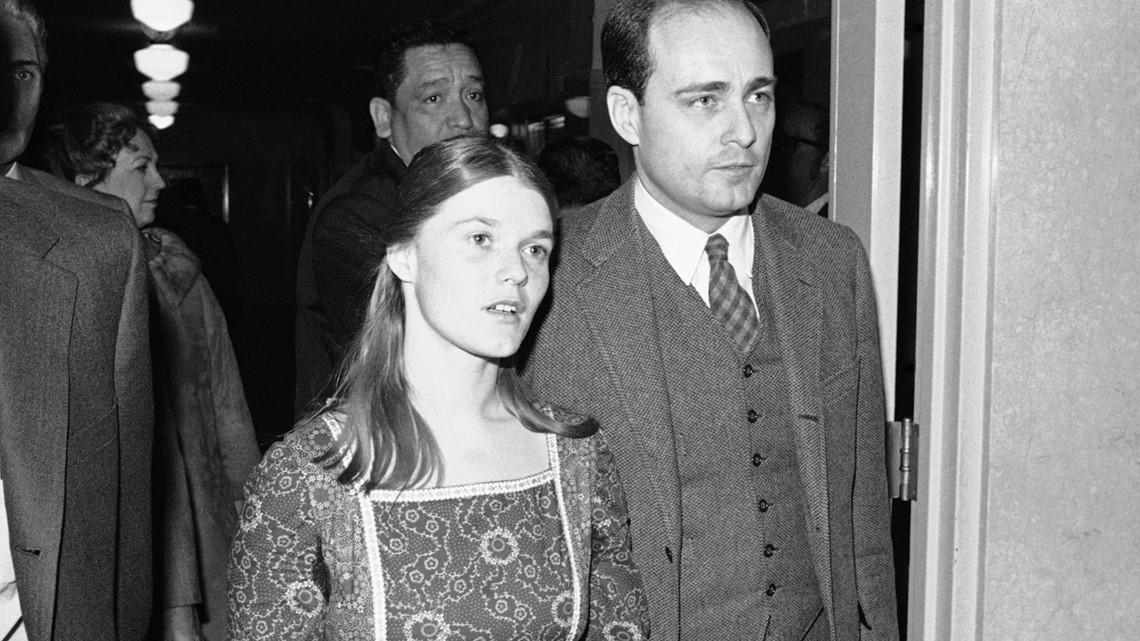
Didion is famous for saying that for many, the end of the 1960’s came at the exact moment when the news of Sharon Tate’s murder broke. Since then, pop culture has been enamoured with legends of the murderous Manson family. Joan Didion was caught up in the sweep as well; she spent extensive time interviewing Manson family member (and getaway driver on the night of the murders) Linda Kasabian. She even cooked dinner for her, describing the experience as “…weirdly normal. And yet it was not normal at all.” But that’s not all she did for Kasabian. For Kasabian’s first day in court, she asked Didion for help picking out a dress. Apparently her lawyer had told her not to wear the long white dress she originally planned to have on. She gave Didion a few instructions for what kind of dress she wanted (“Mini but not extremely mini. In velvet if possible. Emerald green or gold. Or: A Mexican peasant-style dress, smocked or embroidered”- from Didion’s book The White Album), and the writer went out and bought one for her. Although it is clear that Kasabian did indeed wear the dress that Didion bought for her in court, photos of the exact dress appear to be non-existent. We looked!
In the summer of 1967, she hung out with runaways and acidheads as part of her research for an article in The Saturday Evening Post, immersing herself in the hippie community of San Francisco. Her depiction of Haight-Ashbury meant that no one looked at hippies in quite the same way. The article became a book, her first collection of nonfiction, “Slouching Towards Bethlehem”. Emma Hager wrote that the splendor and chaos of the Golden State explains the writer’s vision of the world. Born and raised in Sacramento, Didion was descendent of the Donner Party – the group of American settlers who eventually had to resort to cannibalism to survive. Didion’s biographer, Tracy Daugherty believes that her early style was influenced by a letter from Virginia Reed, a Donner Party survivor.
4. She had some interesting writing rituals…
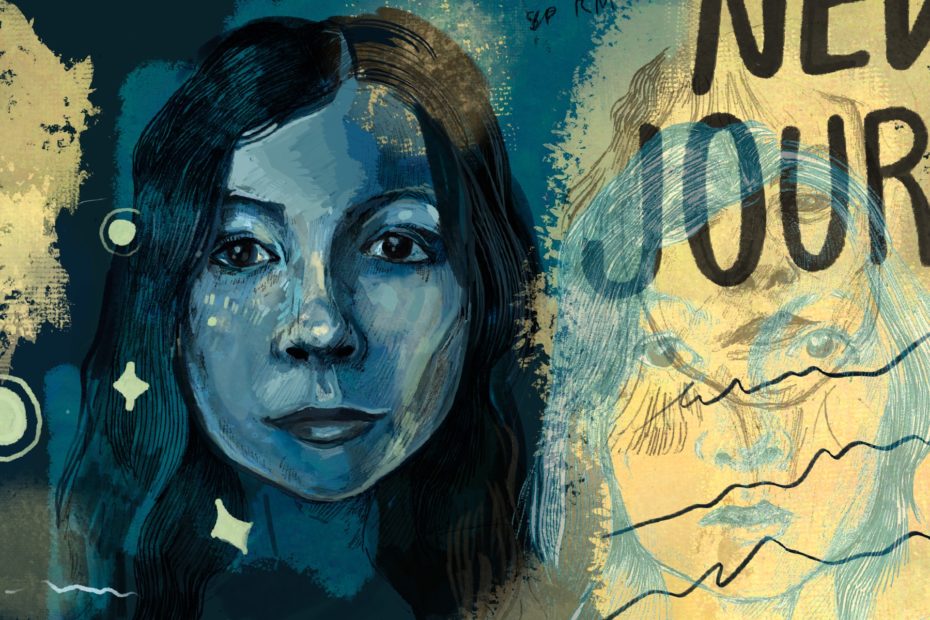
Didion dealt with writer’s block like she dealt with a lot of things – with a cold shoulder and icy calm. In this case, literally, since she would put manuscripts she was struggling with in her freezer. She also felt strongly about her writing process, which included hours each day spent trying to formulate the idea of what she wanted to say. Then, around dinner time, getting out a few sentences or a paragraph. Didion defended this slow-albeit eventually-productive- style by saying, “It forces you to work the thing through. Nothing comes to us out of the blue, very easily, you know. So if you want to understand what you’re thinking, you kind of have to work it through and write it. And the only way to work it through, for me, is to write it.”
Once a manuscript was nearing completion, Didion made sure that she had it in the same room as her when she slept. She felt that the nearness of the thing kept it all fresh in her mind. Since today Didion’s work includes multiple books, and countless articles that seem as relevant as ever, we’d say she must have stumbled onto a process that really worked.
5. In 1961, she wrote a timeless essay for VOGUE about Self-Respect
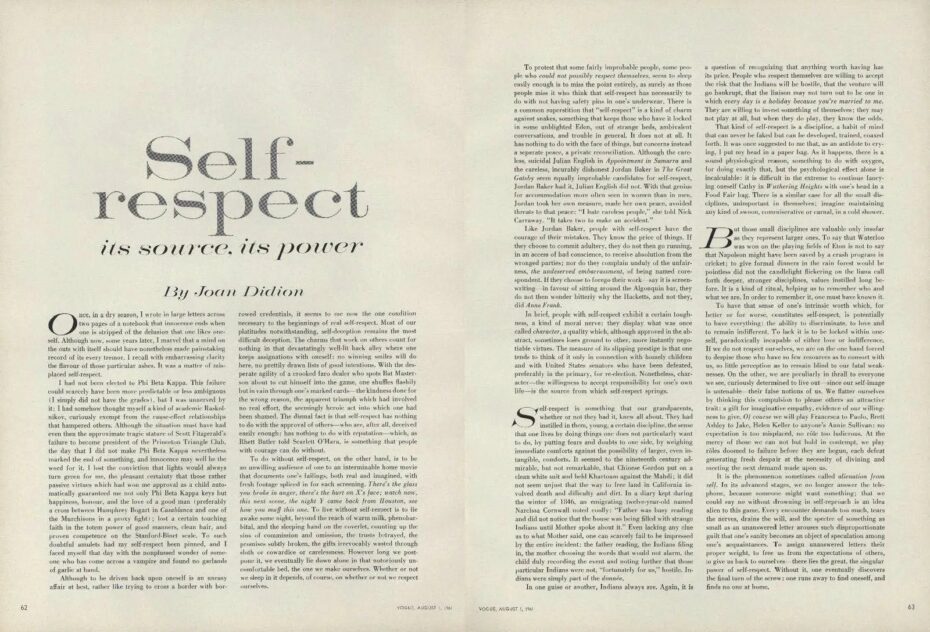
This was at a time when most articles aimed at women were about clothes and makeup. Read it in full here. During Didion’s senior year of high school, she had won first place in the “Prix de Paris” essay contest sponsored by Vogue, winning her a job as a research assistant at the magazine. As part of the application form, candidates had been asked, “What languages do you speak?” Didion’s answer was “Middle English.”
6. The quality of her voice was a character in her articles
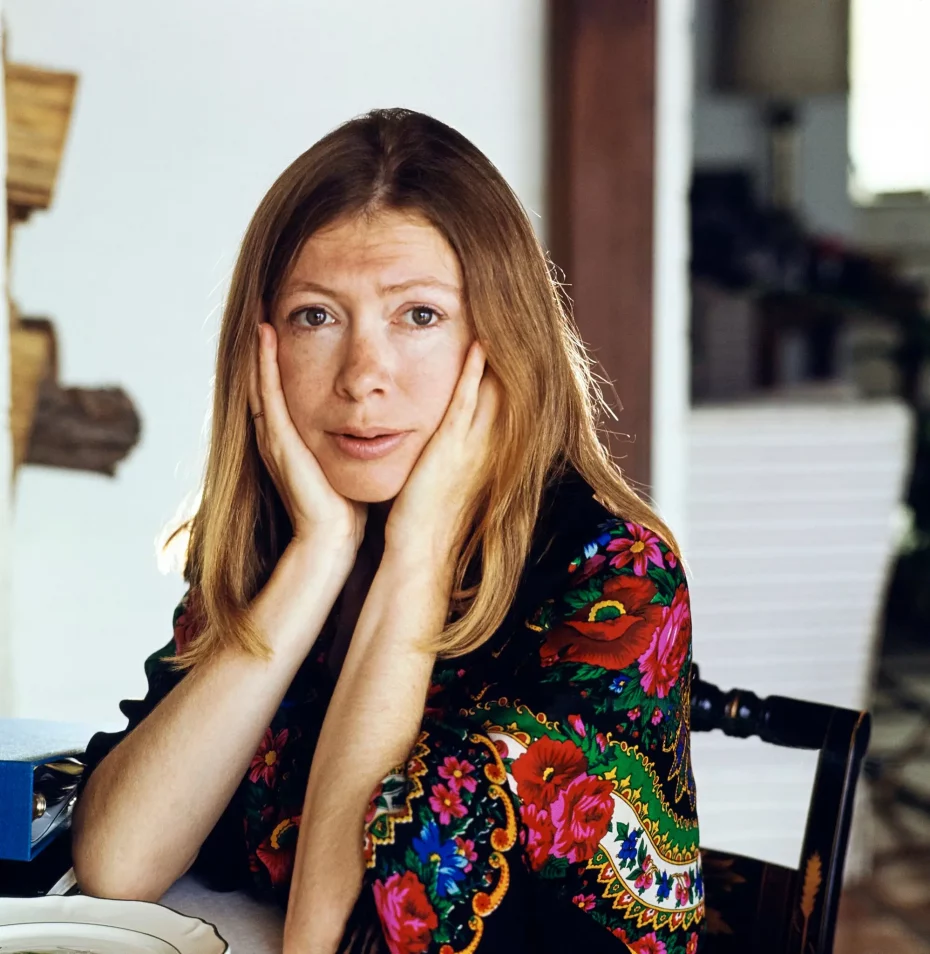
Journalists like Hunter S. Thompson are quite famous for their literary voice, which shines through their writing, no matter the subject matter. But it would be a tragedy to forget that Joan Didion was also one of those writers who had such an iconic voice. Didion produced a prolific amount of work, but what really sets her apart is her unflagging ability to write as herself. An article from the New York Times by William Grimes quite accurately points out, “Her attraction to trouble spots, disintegrating personalities and incipient chaos came naturally.”
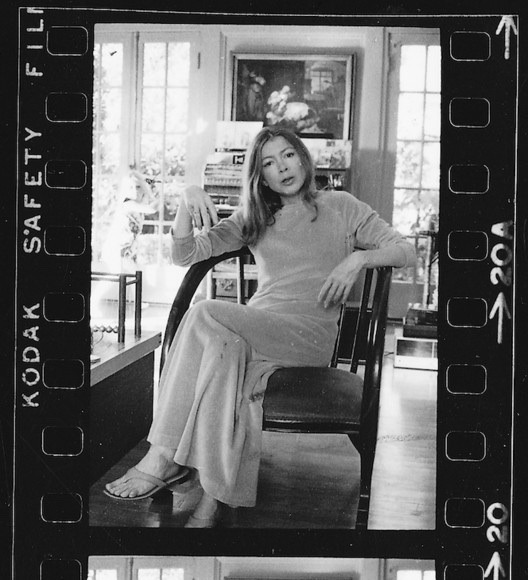
In fact, Didion was a prime example of a genre called “New Journalism”. The main difference between this and a more traditional form of journalism, is that in new journalism the author’s voice is strong enough to carry the reader through the facts, places, people, and events. Traditionally, the author strives to remain silent.
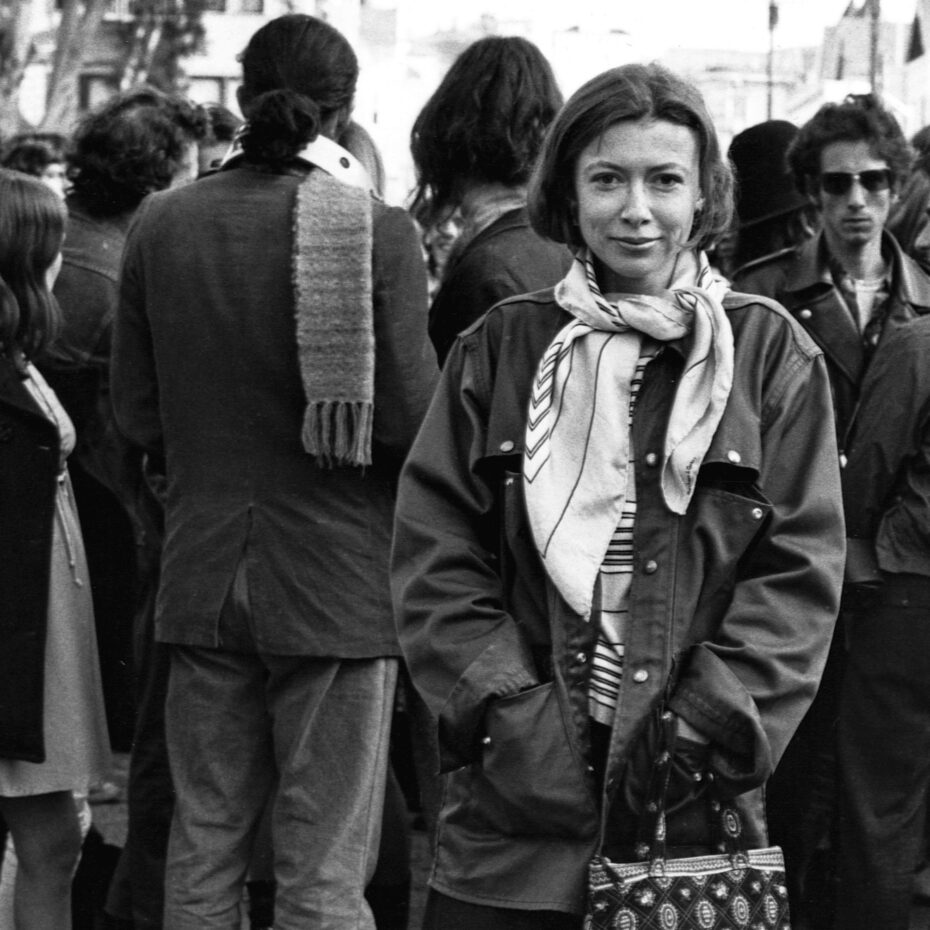
The legacy that Didion leaves behind for us is that of a woman who pushed aside convention to write works that are startlingly intriguing, and surprisingly personal. Didion was not content to stay in her lane – the story of her intro essay with Life is a perfect example – and the field of journalism is so much richer for it.
Joan Didion: The Center Will Not Hold is available to watch on Netflix.